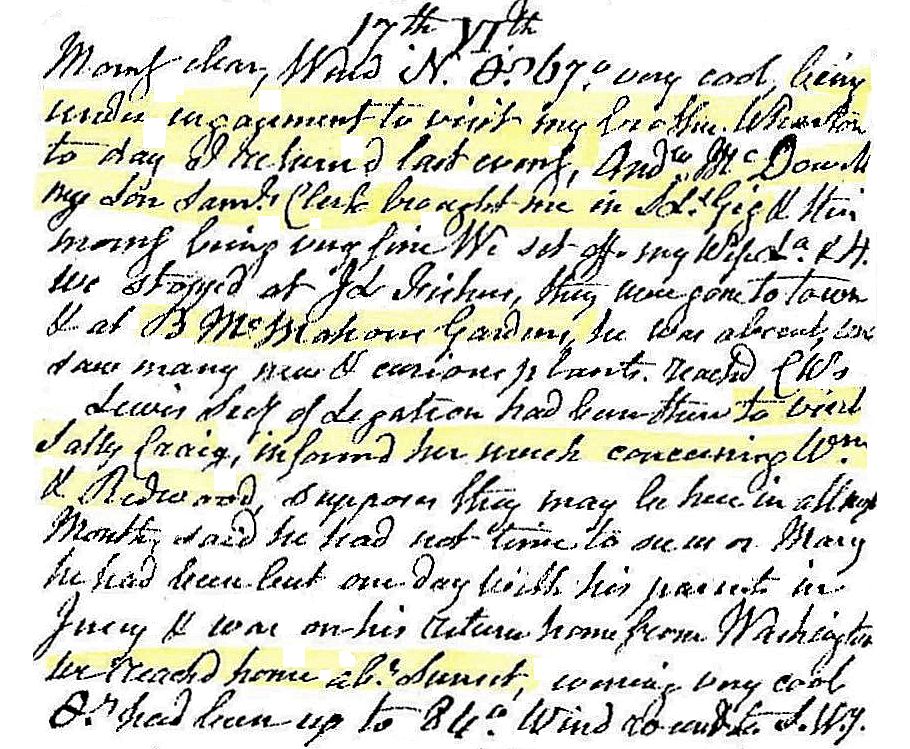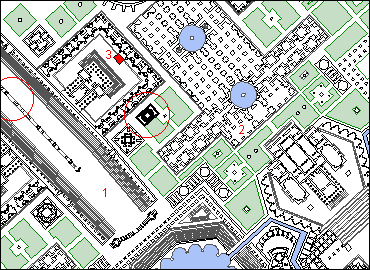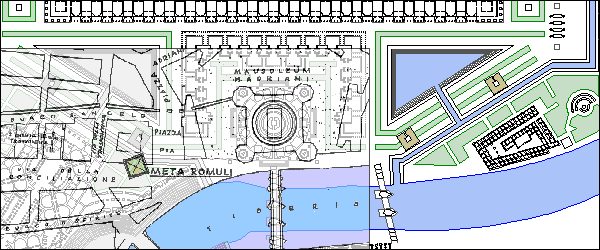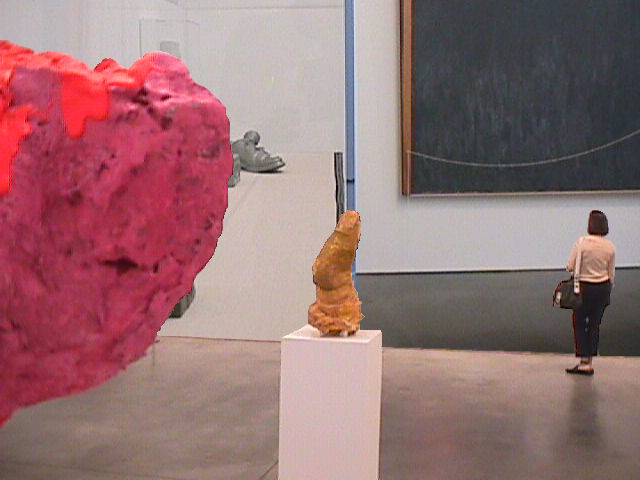17 July 1778 Friday
. . . . . .
Artifacts of the Bianconi vs Piranesi 'Circus of Caracalla' affair 1772-1789
Giovanni Lodovico Bianconi's "Elogio Storico del Cavaliere Giovanni Battista Piranesi Celebre Antiquario ed Incisore de Roma" (1779)
paragraph nine
Ma lasciamo tali cose come argomento adiaforo a’ nostri fogli, e dicasi di volo qualche cosa piuttosto sopra le dispute letterarie che il Piranesi bravamente sostenne. Degna di particolar menzione fu quella che ebbe con monsieur Mariette, erudito parigino, autore del bel trattato Delle Gemme incise degli antichi e gran conoscitore di stampe e disegni. Pretendea il Mariette, secondo l’inveterata comune opinione, e contro ciò che nella sua opera Della magnificenza e dell’architettura de’ Romani avea asserito il Piranesi, che quanto nelle belle arti seppe l’antica Roma, di tanto ne fosse essa debitrice alla Grecia. La sostanza data fuori dal Piranesi era che piuttosto i Romani ed i Greci avessero tutto imparato da quegl’Italiani, che prima dei Latini dominarono l’Italia, cioè dagli Etruschi, la cui storia ci è stata offuscata dall’adulazione degli scrittori, che hanno voluto portar al cielo solamente le imprese “Dei nipoti magnanimi di Remo”.
But let us leave these things as an adiaphore argument to our papers, and let us say something rather on the fly about the literary disputes that Piranesi bravely argued. Worthy of particular mention was the one he had with monsieur Mariette, a Parisian scholar, author of the beautiful treatise Delle Gemme engraved by the ancients and a great connoisseur of prints and drawings. Mariette demanded it, according to inveterate common opinion, and against what was in his own Of the magnificence and architecture of the Romans Piranesi had asserted that what ancient Rome knew in the fine arts, so much was it owes to Greece. The substance given out by Piranesi was that rather the Romans and the Greeks had learned everything from those Italians, who before the Latins dominated Italy, that is, by the Etruscans, whose history has been clouded to us by the flattery of the writers, who wanted bring to heaven only the feats "Of the magnanimous grandchildren of Remo".
paragraph ten
Possedettero certamente gli Etruschi in supremo grado, fino da quando i Greci erano ancora barbari, le belle arti, come vediamo dalle antichissime loro monete, dalle loro gemme e statue, da quegli edifizi che durano ancora, e dalle poche sì, ma decisive autorità degli scrittori greci e latini. Se qualche cosa è passato dalla Grecia nell’Italia, non fu tutto al più che gli ornamenti, ed una certa sveltezza nei lavori, pregio mai sempre e carattere, benché posteriore, della patria d’Omero e di Nicandro. La questione essendo assai dottamente agitata da vari insigni letterati italiani, cominciando dal marchese Maffei sino a monsignor Guarnacci, non deesi qui rimettere sul tappeto, essendo ormai decisa per sempre. Il fatto è che tutti furono in favore del Piranesi, che pubblicò forte risposta al Mariette, la quale a guisa di supplemento va oggi all’opera suddetta Della magnificenza che l’avea fatta nascere. Altra lite men seria toccante alcune eccezioni date alla poca fedeltà de’ suoi rami ebbe coll’Abbate di Cap. Martin Choupy indefesso indagatore della Villa d’Orazio, da lui finalmente trovata dopo copiosi sudori, e dopo il più penoso viaggio di tre grossi tomi pieni di erudizione, benché confusa e scritta nella più singolar lingua francese che siasi mai strappata da Rabelais in qua. Il Piranesi trattò burlando questa questione più con parole che con iscritti. Altre controversie potrebbero qui indicarsi, ma interessando piuttosto il commercio de’ suoi libri, che la letteratura, lasceremo parlarne ad altri.
Ever since the Greeks were still barbarians, the Etruscans certainly possessed the fine arts in the highest degree, as we can see from their very ancient coins, from their gems and statues, from those buildings that still exist, and from the few, yes, but decisive authorities of the Greek and Latin writers. If anything passed from Greece to Italy, it was not all more than the ornaments, and a certain quickness in the works, a quality never always and a character, albeit later, of the homeland of Homer and Nicander. The question being very eruditely agitated by various distinguished Italian men of letters, starting from the Marquis Maffei up to Monsignor Guarnacci, it should not be brought up again here, since it is now decided for good. The fact is that everyone was in favor of Piranesi, who published a strong response to Mariette, which today goes as a supplement to the aforementioned work Della magnificenza which gave birth to it. Another less serious quarrel touching some exceptions given to the lack of fidelity of his branches he had with the Abbot of Capt. Martin Choupy tireless investigator of the Villa d'Orazio, which he finally found after copious sweats, and after the most painful journey of three large volumes full of erudition, though confused and written in the strangest French tongue ever wrested from Rabelais here. Piranesi mocked this question more with words than with subscribers. Other controversies could be indicated here, but since they concern the trade of his books rather than literature, we will leave them to others.
46 y.o. Francesco Piranesi 1804
Le Antichità della Magna Grecia Parte I

Demonstration of Impluvium, or Sump established in the middle of the Court in the House of the Surgeon at Pompeii.
Drawn by G.B. Piranesi
Engraved by F. Piranesi Year 12 (1804)
17 July 1812 Friday

Morning clear, wind N, temperature 67°, very cool. Being under engagement to visit my brother Wharton today, I returned last evening. Andrew McDowell, my son Samuel's clerk brought me in SL's gig, and, this morning being very fine, we set off, my wife, Lydia and Hannah. We stopped at JL Fisher's, they were gone to town, and, at B. McMahon's Gardens, he was abroad. We saw many new and curious plants. Reached CW's. Lewis Secretary of Legation had been there to visit Sally Craig, informed her much concerning William and Redwood, supposes they may be here in all next[?] month. Said he had not time to see us or Mary. He had been but one day with his parents in Jersey, and was on his return home from Washington. We reached home about sunset. Evening very cool, temperature had been up to 84°, wind round to SWerly.
17 July 1998
Honorius, Flavius
- son of the emperor Theodosius I, and brother of Arcadius
- the first emperor of the western Roman empire
The emperor Honorius plays a significant role within the narrative of the Ichnographia in that his sepulcher is the last building of ancient Rome represented in the large plan. With the exception of the Arch of Arcadius, Honorius and Theodosius (which is not represented within the Ichnographia), all of Honorius' other building activities in Rome involved repairs to existing structures. Indeed, Honorius is the last Roman emperer to build imperial structures in Rome.
In broad terms, the reign of Honorius signifies the Roman Empire's cessation as a cohesive whole, as well as Rome's ceasing to be the nucleus of classical civilization. Furthermore, Honorius' new constructions in Rome denote a clear shift in focus directed away from the Roman Forum and aimed at the Basilica of St. Peter in the Vatican valley--a shift that reflects perfectly Rome's inversion from paganism to Christianity.
Sep. Honorij Imp.
The Sepulchrum Honorij Imp. represents the last building of ancient Rome within the Ichnographia Campus Martius. Honorius was indeed Rome's last imperial patron in terms of major building projects, and Piranesi's concluding with the Tomb of Honorius suggests that an objective for the Ichnographia was to display the total imperial building history of the Campus Martius and its environs. This possible objective, however, remains ambiguous because Piranesi blatantly omits some major architectural monuments such as the Aurelian Wall and Constantine's Basilica of St. Peter. Nonetheless, the Tomb of Honorius marks the Ichnographia's temporal end limit against which all interpretations of Piranesi's objectives must be calibrated.

Sepulchrum Honorij Imp. in context:
The Tomb of Honorius is situated between the Circus Caij et Neronis (1) and the Porticus Neronianae (2). The actual site of the tomb or mausoleum (indicated by the second red circle) was along what at one time was the spina of the Circus of Caligula and Nero. The Sepulchr. Mariae Honorij Congiig. (3)--the tomb of Honorius' first wife Maria--is close by.
Delineated as a stand-alone building within the Horti Neroniani, Piranesi situates the tomb close to its actual site, which was beside and attached to the south transept of the original St. Peter's Basilica. Although St. Peter's is absent from the Ichnographia, the tomb's real site is locatable because it was built along the spina of the Circus of Caligula and Nero, which is placed correctly within the Ichnographia albeit unlabeled [in the second state of the Ichnographia]. Even without St. Peter's, the Tomb of Honorius is still next to a basilica shaped building, which Piranesi labels Porticus Neronianae, and turning the tomb in conjunction with the porticus upside-down discloses an even closer representation of the tomb's true locale. Given this set of circumstances, it is not hard to imagine that Piranesi is here attempting to deliver a message, namely that the beginning of the fifth century, when Honorius built his mausoleum, was the time when the political situation in Rome itself began to completely turn around.
Meta Romuli
Piranesi designates two pairs of pyramids along the canals and pools (stagnum) situated either side of the Sepulchum Hadriani. No specific names are applied to these pyramids, and the word pyramis is their only label. Together with Hadrian's Tomb, they establish a grand symmetrical layout that extends throughout the Horti Domitiae and includes the Bustum Hadriani. As a group, the four pyramids have no historical or archeological validity, however, the position of the pyramid closest to Hardian's Tomb, on the side facing St. Peter's, is remarkably close to the verified position of the Meta Romuli. This correspondence of placement between the real pyramid and Piranesi's imaginary one could be an uncanny coincidence, or it could be an example of a methodology Piranesi used to aid in piecing together his overall Campo Marzio design. If the latter is true, then Piranesi willfully manipulated a historical artifact to conform to his preferred design scheme. Moreover, Piranesi's exact mirroring of the Meta Romuli suggests careful maneuvering rather than whimsical play. The Ichnographia pyramid is in essence an inversion of the Meta Romuli.

Overlay of the Ichnographia and the site plan of the Meta Romuli.
Romulus
As the son of Mars, and as founder and first king of Rome, Romulus is synonymous with beginnings. Without Mars, however, Romulus is nothing, so it is through the concomitance of Mars and Romulus that the origin of Rome takes place in Piranesi's Campo Marzio.
The presence of Romulus within the Ichnographia occurs both directly and indirectly. There is the Templum Romuli, and there is the Templum novum Quirini. The Templum Romuli is within the Campus Martius proper, while the Templum novum Quirini is situated further east between the Horti Salustiani and the base of the Quirinal Hill. Both temples, interestingly enough, "preside" over large stadium complexes, and it is worth further noting that the Templum Romuli is on the same axis as one of the Ichnographia's two Templum Martis.
The third and most indirect reference to Romulus is the Lineae indicantes viam triumphalem--the line indicating the Triumphal Way--which begins in the Area Martis in front of the Ichnographia's other Templum Martis that is on the west bank of the Tiber within the Vatican valley. Each Roman Triumph, of which there were hundreds throughout ancient Rome's history, is a reenactment of the original triumphal march of Romulus. The Lineae. . .triumphalem of the Ichnographia therefore literally marks a lineage back to Rome's inception, and thus locates a point of beginning for the Ichnographia Campus Martius as well.
17 July 2005
The Semiology of God
Only part of the Holy Cross went to Constantinople. Most of it stayed at Jerusalem, specifically at the Church of the Holy Sepulcher, and part of it went to Rome and is still within the Helena chapel at Santa Croce in Gerusalemme, and is half of the titilus, the sign on the Cross.
The Semiology of God
Helena was buried at Rome a day of two before 3 August 326, subsequent to her death 25 July 326, probably at Naples.
I have spent a good deal of time over the last six years gathering multitudinous data relative to the life of Helena, so single quotations mean very little to me. There are a lot of contradictions within modern Helena scholarship, and it has been exactly the contradictions that I have striven to understand and hopefully ultimately resolve.
One major aspect of the Helena's legend which has eluded modern scholarship is that a law of silence regarding Helena and the Cross was in force when Eusebius wrote of Helena in the Holy Land within his Life of Constantine (337). Ambrose, bishop of Milan, broke the silence regarding Helena and the Cross in his Obit Theodosi, the Obituary of Emperor Theodosius (395). The law of silence regarding Helena and the Cross was suggested immediately after the death of Helena to Constantine by Eutropia, and the reason for this law was so that overall power would stay within the Imperial ranks, rather than go to the Christian priesthood which then had a new sign, the True Cross, to confirm its power.
The Semiology of God
18 September 324 - Constantine defeats Licinius at Chrysopolis and in turn becomes sole ruler of the Roman Empire.
8 November 324 - Constantine founds Constantinople
25 July 325 -- the Nicene Creed and conclusion of the Nicene Council, over which Constantine presided. 25 July 325 also marked the beginning of Constantine's 20th year as a Roman Augustus. It is fairly certain that Helena also attended the Nicene Council.
14 September 325 - Helena finds the Holy Cross at Jerusalem.
25 July 326 - the closing ceremonies of Constantine's 20th jubilee year at Rome. The death of Helena and the suicide of Fausta, Constantine's second wife (at Naples and Rome respectively).
3 August 326 - Constantine leaves Rome and never returns.
11 May 330 - dedication of Constantinople.
22 May 336 - death of Constantine at Nicomedia.
During Constantine's 20th jubilee year, his movements throughout the Empire were a gradual moving toward Rome over land--Greece, the Balkans, northern Italy. During the same period, Helena likely moved toward Rome via north Africa, ultimately crossing to Italy from Carthage.
17 July 2006

virtual exhibition 016
17 July 2007
on aesthetics
Perhaps that's what the artist/architect does, apply form to content. Yet, in the case of Piranesi's Ichnographia Campus Martius at least, it is the form within a context that discloses the content (if the observer is astute enough to find it)--the content is implied rather applied.
17 July 2023 Monday
Miers Fisher Jr., Hélène Gregoroffsky Fisher, Andrei Iakovlevich Dashkov and wife, some other Russian delegates at Ury. It's weird how I feel I'm forgetting someone. Well, my parents, of course, plus Velimir Khlebnikov and Sergei Eisenstein, and, ultimately, Yura Plokhov, Ekaterina Plokhov, Yaroslav Aleshin and Alek Petuk.
Is there a Russian dedication within Vases, Candelabra, Grave Stones, Sarcophagi. Tripods, Lamps and Ancient Ornaments? I think so.
It's been a long time since good things just came to me, that is, until this past year--numerous bona fide discoveries and even an invitation from the House of Culture, Moscow.
All this is well beyond the norm, yet it's all been easy. Yes, there is daily work involved, but practically all the real work was done years ago, literally. Presently, it feels like it's time to relax a bit and contemplate all the characters and what it all might mean for the future. It just occurred to me that all this is a small but significant step toward the 2184 maximum assimilation.
|